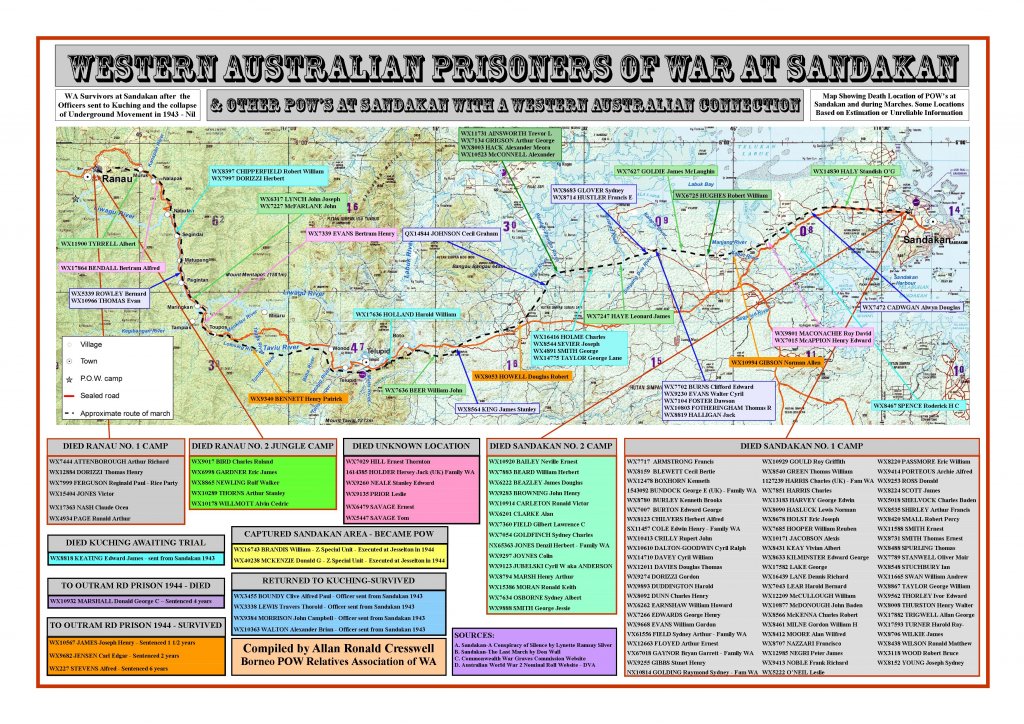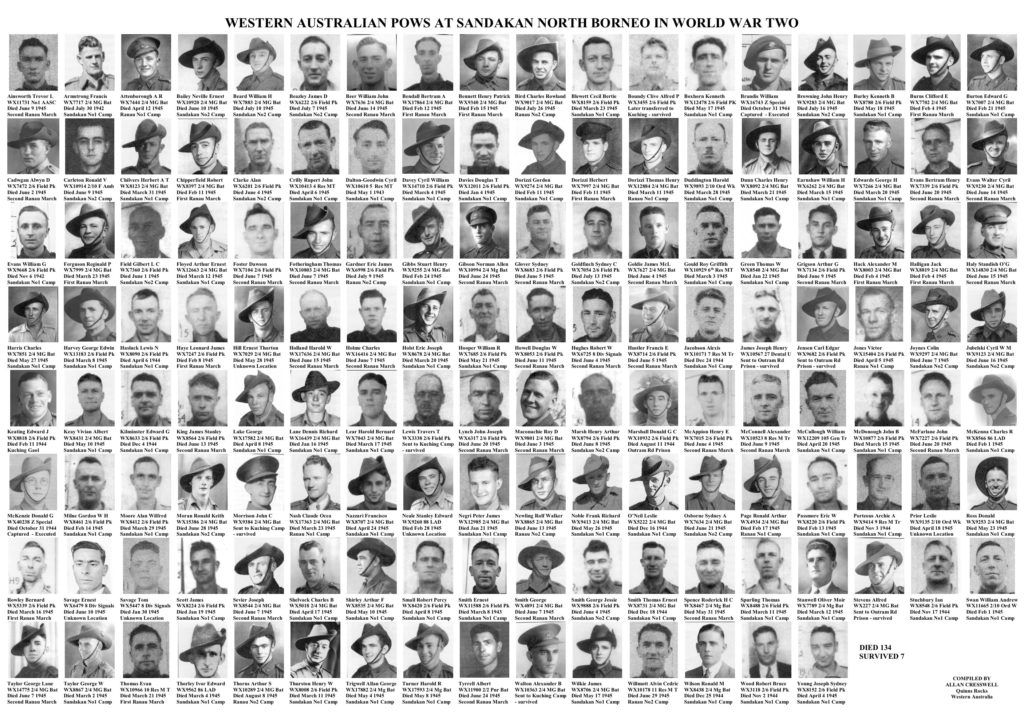In 1942 and 1943, Australian and British POWs who had been captured at the Battle of Singapore in February 1942 were shipped to North Borneo to construct a military airstrip and prisoner-of-war camps at Sandakan, North Borneo (Sabah). 141 of these soldiers were from Western Australia including 71 from the 2/4th Machine Gun Battalion (three did not remain at Sandakan and therefore survived). Additionally Thomas William Green was sent from Java to Singapore to work on Railway – he remained behind due to illness. He was later transported to Kutching and joined ‘E’ Force at Sandakan.
As on the Burma Railway the prisoners were forced to work at gunpoint, and were often beaten whilst also receiving very little food or medical attention. In August 1943, with the intention of controlling the enlisted men by removing any commanders, most officer prisoners were moved from Sandakan to the Batu Lintang camp at Kuching. Conditions for the remaining prisoners deteriorated sharply following the officers’ removal. Any rations given were further reduced, and sick prisoners were also forced to work on the airstrip. After construction was completed the prisoners initially remained at the camp.
In January 1945, with only 1,900 prisoners still alive, the advancing Allies managed to successfully bomb and destroy the airfield. It was at this time with Allied landings anticipated shortly that camp commandant Captain Hoshijima Susumi decided to move the remaining prisoners westward into the mountains to the town of Ranau, a distance of approximately 260 kilometres (160 mi). He claimed that this was an order of Lt Gen Baba Masao, commanding officer of the 37th Japanese Army. The former military airstrip is now known as Sandakan Airport, which serves Sandakan town.
By the end of the war, of all the prisoners who had been incarcerated at Sandakan and Ranau, only six Australians survived.
Three soldiers from the 2/4th survived. WX 9384 Lt John Campbell Morrison and WX 10363 Lt Alexander Brian Walton, as officers, were sent from Sandakan to Batu Lintang Camp at Kuching. WX227 Pte Alfred Stevens was sentenced to 6 years solitary confinement at Outram Rd Prison Singapore for escaping.
It is widely considered to be the single worst atrocity suffered by Australian servicemen during the Second World War.
RECOVERY OF RELICS
Lynette Silver’s book ‘Sandakan – a Conspiracy of Silence’ Sally Milner Publishing -P 361, ‘Items found Sandakan No. 2 Compound’ include:
Colin Joynes identification disc (died 7 June 1945)
Syd Osborne’s haversack, tin mug and web equipment (died 21 June 1945)
Frank Shirley’s paybook (died 10 May 1945)
Amongst the paybooks found under groundsheets at No. 2 Compound No. 2:
Ron Moran, Syd Osborne and George William Taylor.
Lynette Silver’s book ‘Sandakan – a Conspiracy of Silence’ Sally Milner Publishing P 362, ‘Items found at Ranau – No. 1 Camp’
Arthur Attenborough’s identity disc (died 12 April 1945)
Gordon Dorizzi’s POW Tag (died 11 February 1945)
Bert Dorizzi’s identity disc (died 11 February, 1945)
Lynette Silver’s book ‘Sandakan – a Conspiracy of Silence’ Sally Milner Publishing P 363. Items found at No 2 Jungle Camp, 110 ¼ mile:
Claude Nash’s POW tag (died 23 March 1945)
Arthur Thorns POW tag (died 1 August 1945). Thorns was amongst the last POW group at Ranau to be massacred.
Please read further and see full list of 2/4th
Read further about the Sandakan to Ranau Marches
Also read about the historical construction of the Sandakan Memorial at Boyup Brook – the first in Western Australia and the second in Australia


